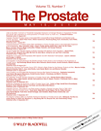Tumor focality is not associated with biochemical outcome after radical prostatectomy†
Disclosure: The authors have nothing to disclose.
Abstract
BACKGROUND
The clinical and prognostic significance of unifocal prostatic carcinoma is not clearly understood. In the current study, we sought to characterize the clinical and pathologic characteristics of unifocal and multifocal prostate cancers and to investigate the effects of tumor focality on biochemical outcome after radical prostatectomy.
METHODS
Our analysis included 1,444 radical prostatectomy patients with available information concerning the number and location of tumor foci in the specimen. Each patient was assigned to one of three groups depending on whether they had unifocal, multifocal, or extensive cancer. Clinical and pathological features as well as biochemical outcomes were compared between the groups.
RESULTS
Two hundred and seventy-two mens in the study cohort (18.8%) had unifocal cancer. The rates of unifocal cancer did not differ significantly between the three studied time intervals (17.3% in 1992–1998, 20.5% in 1999–2004, and 17.8% in 2005–2011). The number of positive biopsy cores was slightly lower in the unifocal group, while the overall amount of biopsy tissue containing cancer was similar in both groups. The patients in the multifocal group had higher pathologic Gleason scores, increased incidence of positive surgical margin, and larger tumors. The rate of clinically significant Gleason score upgrade was significantly higher in the multifocal group compared to the unifocal group (35.7% vs. 21.7%, respectively, P < 0.001). The biochemical outcome after radical prostatectomy did not differ between patients with unifocal and multifocal cancers both on univariate and multivariate analyses.
CONCLUSIONS
Tumor focality is not an independent prognostic factor of biochemical outcome in radical prostatectomy patients. Prostate 72:762–768, 2012. © 2011 Wiley Periodicals, Inc.




